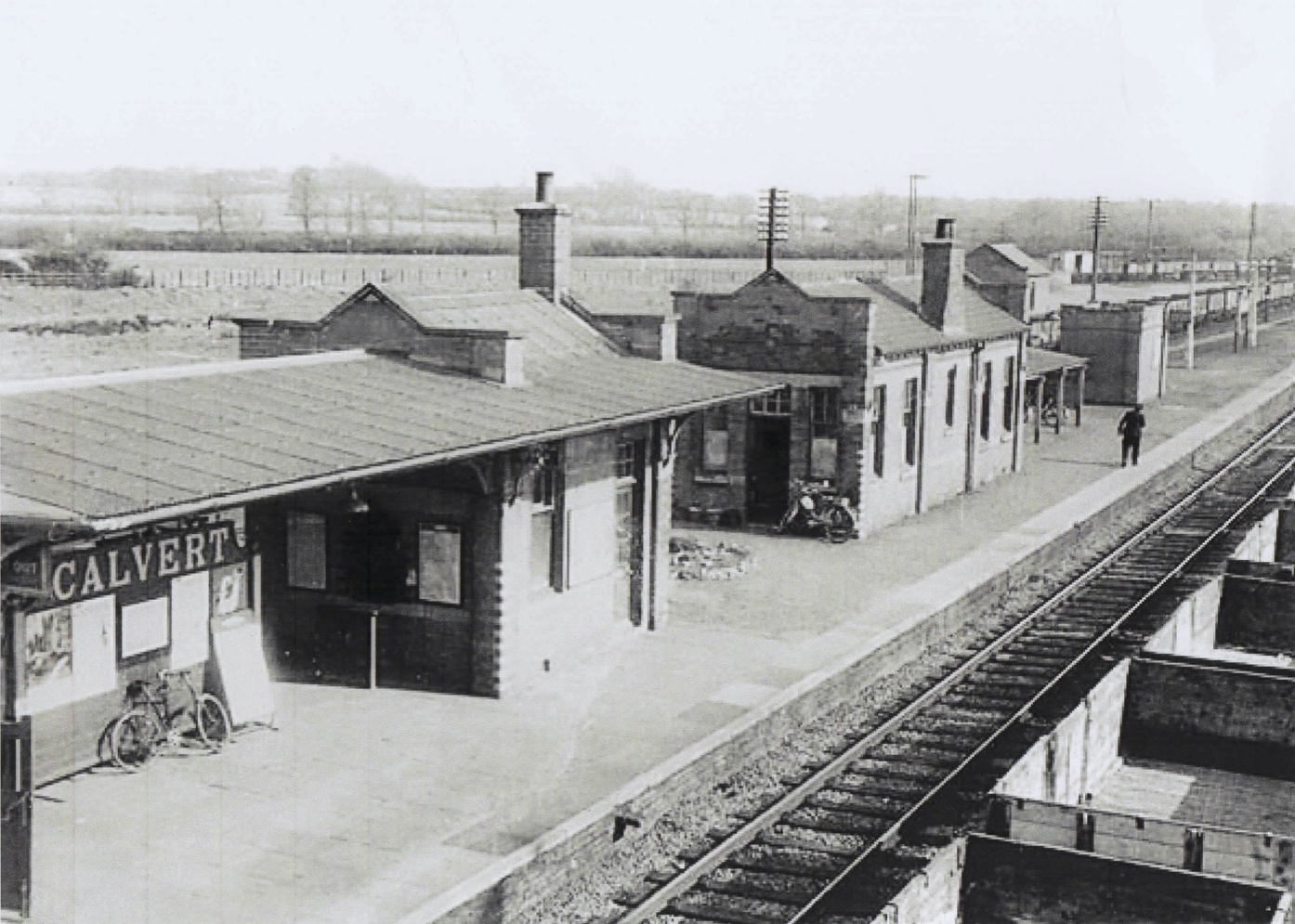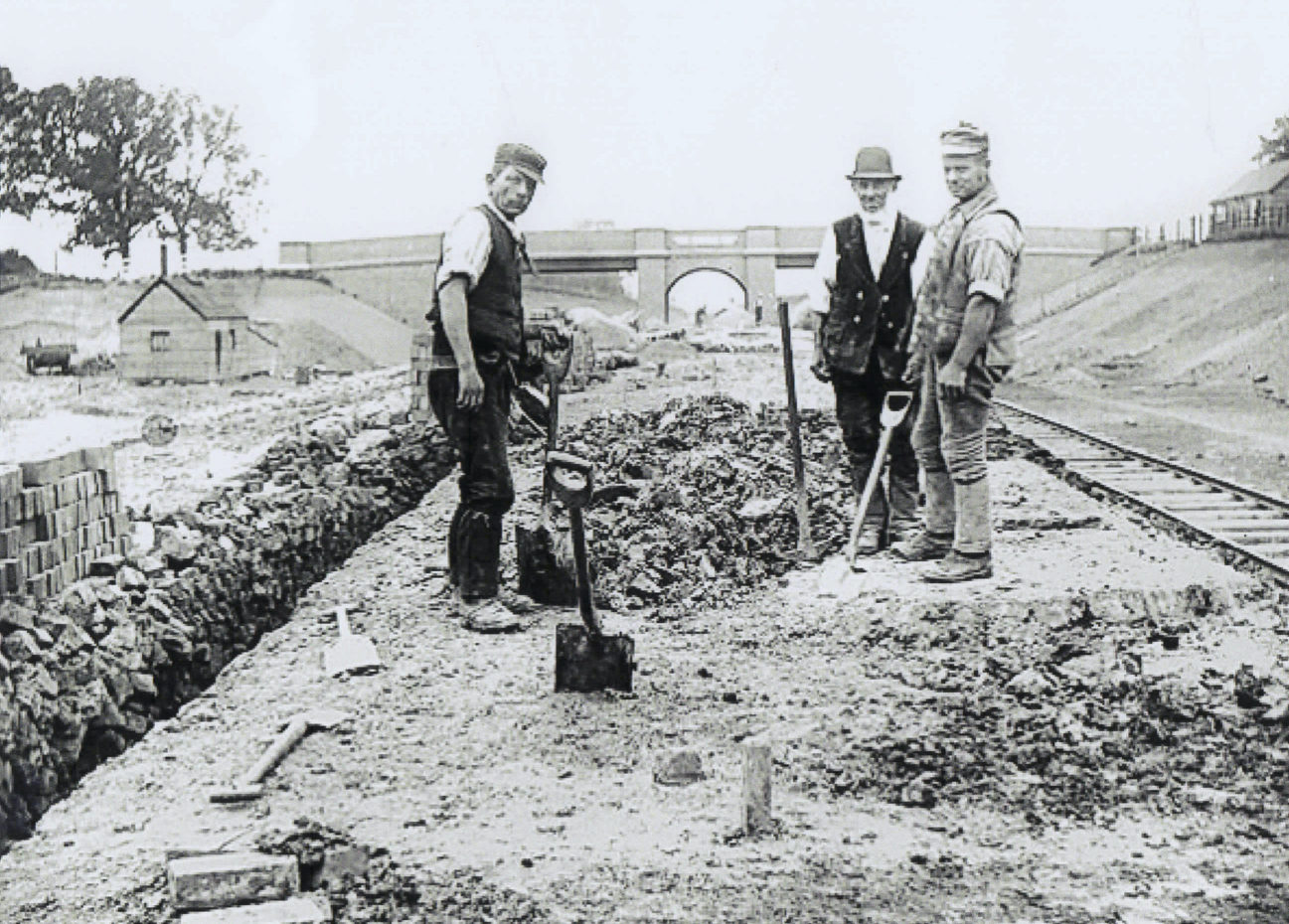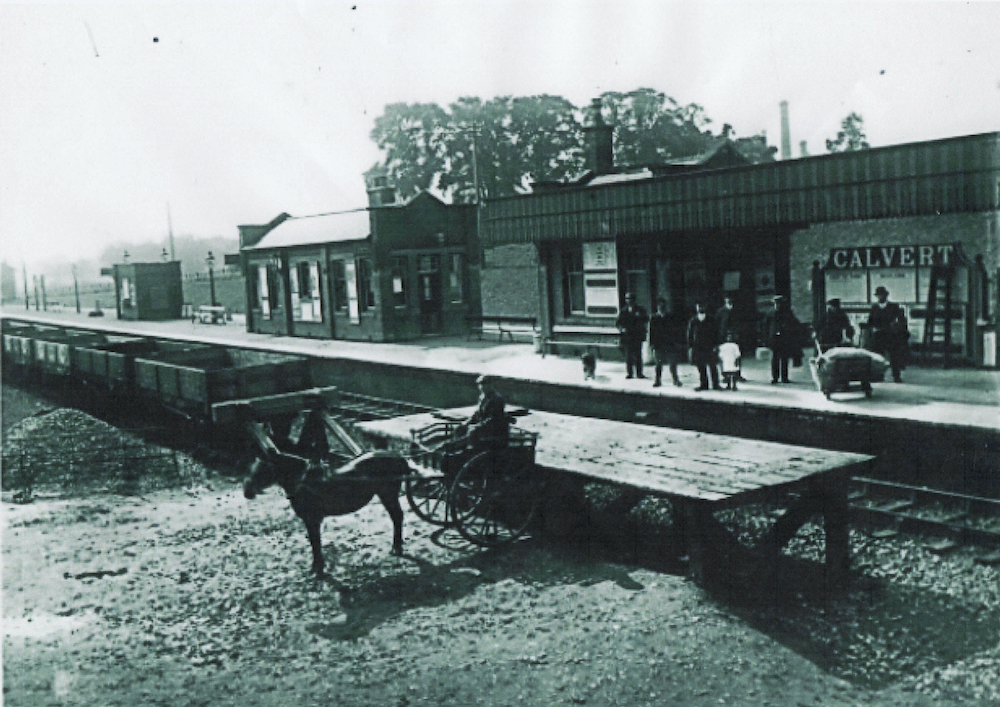Calvert
Calvert is a small hamlet near the village of Steeple Claydon.
Originally named after a wealthy local family who had inherited property at Claydon House, Middle Claydon, on condition that they changed their surname to Verney, the village was founded as a hamlet in the Victorian era to house workers for the brickworks that were constructed in the area.
The Calvert Brickworks was opened in 1900 by Arthur Werner Itter, a brickmaker from the Peterborough area, but have since been closed in 1991 and turned into a nature reserve and landfill. All that remains of the hamlet is a small group of red brick terrace houses.
At the start of the 21st century a new housing estate was built called Calvert Green, greatly enlarging the original village. In 2007 Calvert Green was detached from Charndon and formed into a new civil parish.
BUCKINGHAM EXPRESS Sat 17th Dec 1898
The Great Central Railway shortly to be opened for passenger traffic joins the Metropolitan Line at Quainton Road, the last station on the Great Central’s own line being a little wayside structure called Calvert serving a number of villages in the neighbourhood.
The name has curious origin, worth recording before it becomes lost. It seems that when the Manchester, Sheffield and Lincolnshire Railway – as the Great Central then was – purchased the land here for its London extension, a few acres were bought from the late Sir Harry Verney, the great landowner in that neighbourhood, who withdrew all opposition to the railway scheme and sold land to the company on the condition that the station here should be named “Calvert”. Sir Harry’s name was Calvert before he succeeded to the Verney Estates, “Verney Junction” owes its name to a similar compact

Calvert Station

Workers building the railway, 1898

Calvert Station
